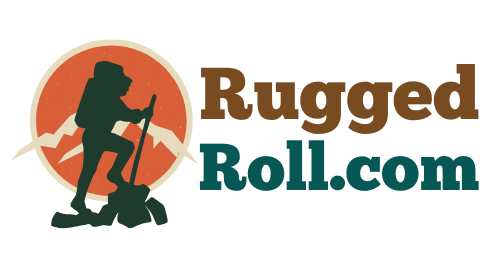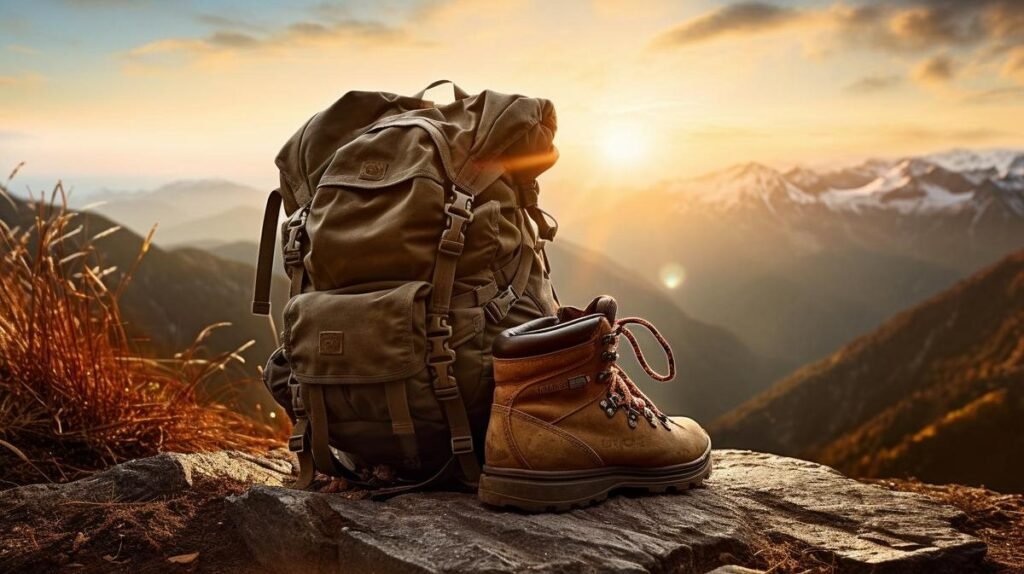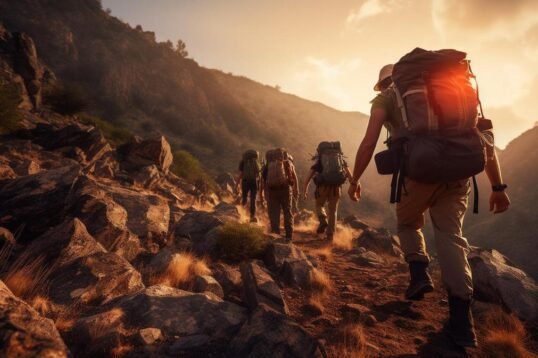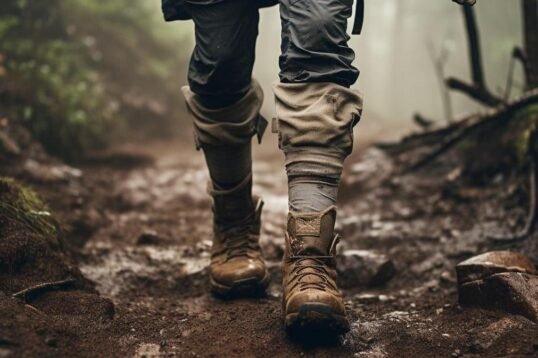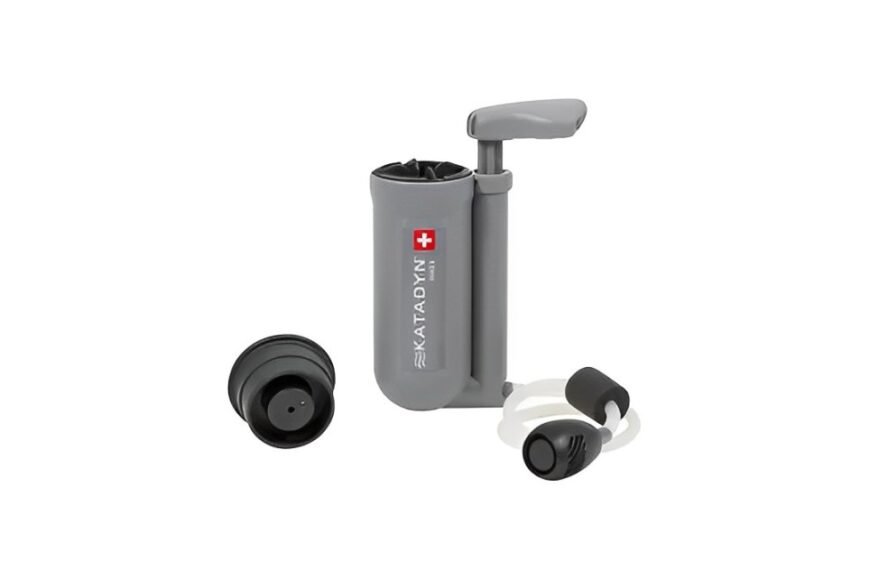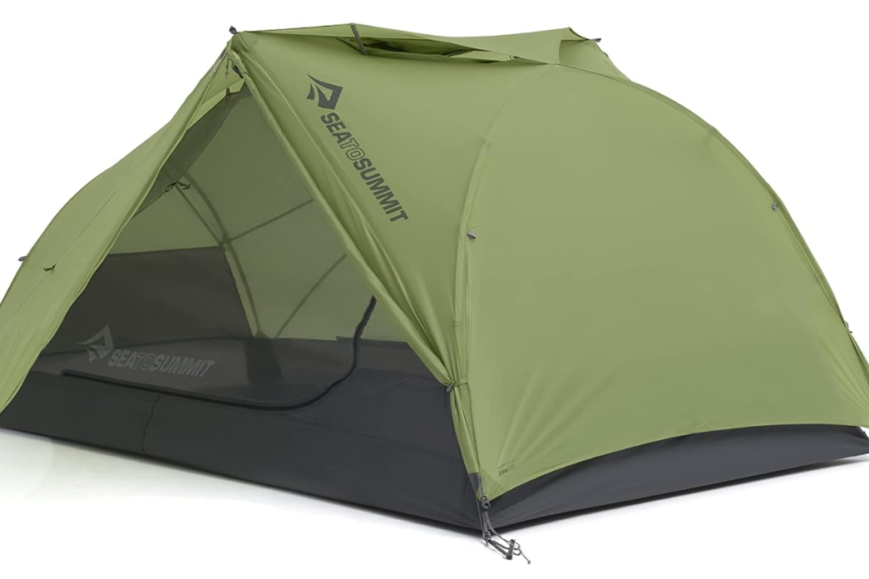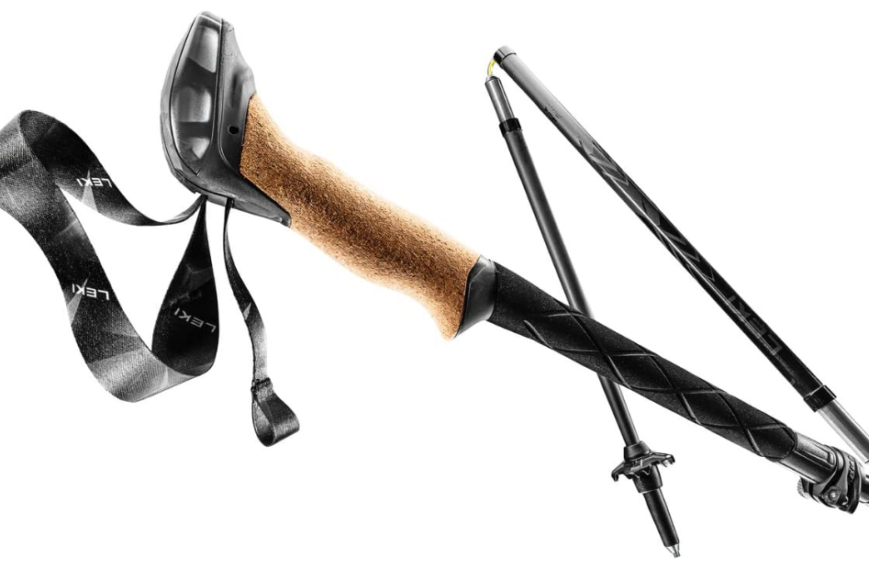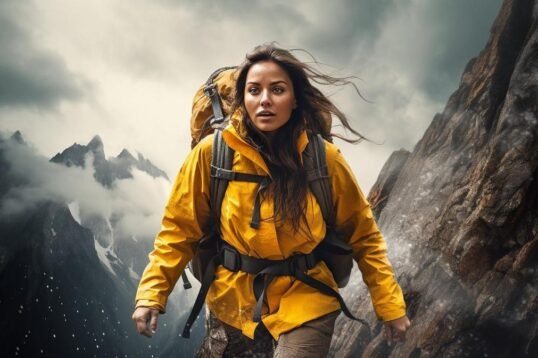- Essential day hiking gear list: “Ten Essentials,” extra clothes, water, snacks.
- “Ten Essentials” include: navigation, headlamp, sun protection, a first aid kit, a knife, a fire starter, shelter, extra food, water, and clothes.
- Gear varies by location; map and boots for mountains; bug spray and compass knowledge for forests.
- Pack light with essentials for safe hiking; map, water, snacks, jacket, and basic first aid kit.
- Choose a small, comfortable backpack (10-30L) for day hikes and balance the load.
- Include high-energy snacks like nuts, seeds, dried fruit, and energy bars.
- Layer clothing based on weather; synthetics or wool over cotton, proper shoes/boots.
- Carry water via bottle or hydration pack; essential sun protection includes a hat, sunglasses, and sunscreen.
- First aid kit: bandages, tape, antiseptic, scissors, tweezers, CPR shield, signaling device.
- Wildlife prep: avoid strong-smelling food, excess gear, and noise; use repellents and be aware of your surroundings.
- Navigation: use map and compass as primary tools, know how to read and use them alongside GPS.
- Emergency gear: shelter, whistle or mirror, fire starter, and knife/multi-tool; know how to use them.
Heading into the wild for some day hiking? Don’t just wander off. Every savvy hiker knows that a solid day hiking gear list is your best trail buddy. I’m here to share key must-have hiking items to tackle nature with confidence. From survival essentials to smart gear that saves space, let’s pack right for your next outdoor trek. Whether it’s your first hike or you’re a trail regular, my beginner-friendly guide will ensure you’re ready for anything the great outdoors throws your way. Now, let’s dive into the essentials that should make it to your backpack!
What Should Be Included on a Day Hiking Gear List?
What do you need for day hiking? You need the “Ten Essentials,” extra clothes, water, and snacks. These items are a must-have on everyday hiking gear list. They can save you in a pinch and make your hike safe and fun.
The “Ten Essentials” help keep you ready for whatever comes your way. These include navigation tools, a headlamp, sun protection, first aid, a knife, fire gear, shelter, extra food, water, and clothes.
Your gear list may change based on where you’re going. Are you heading up a rocky mountain? You’ll want strong boots and a map of the trails. Spending time in a forest? Bring bug spray and learn how to use a compass.
If you’re new to hiking, keep it simple. Pack light but bring enough to stay safe. I suggest a good map, water, snacks, a jacket, and a basic first aid kit for starters.
Some gear does more than one thing. A bandana can cool you off, clean a wound, or filter debris from water. Light and space are precious, so think smart when you pick your gear.
Items like a whistle or a mirror can be lifesavers if you ever get lost. They’re key for any beginner hiker necessities list.
Pack smart, and have fun out there! Remember, being ready lets you relax and enjoy your hike.
How to Choose and Pack Hiking Backpack Essentials?
To pack light for a day hike, choose a small backpack. Arrange items to balance the load. Put clothes in waterproof bags. Pack an extra layer for warmth.
A daypack for hiking is your best friend on the trail. It holds your snacks, water, and gear. When picking one, think of the length of your hike. A pack with 10 to 30 liters of space usually fits all you need. Make sure it feels good on your back and the straps don’t rub your shoulders.
Once you have your pack, it’s time to load it up. Put heavy things low and close to your back. This makes carrying the load easier. Put things you need often, like a map, in pockets where you can get to them fast.
Waterproof your gear, especially electronics, and clothes. Rain can show up without warning. A dry bag or even a strong zip-top bag can keep key items dry.
What about extra clothes? Yes, you need them. Weather can change fast when you’re outside all day. Bring a light jacket or a sweatshirt even if it’s warm when you start. If you get too hot, you can always take a layer off. Clothes made of wool or synthetic fabric are best as they keep you warm even if they get wet.
Remember, the goal is to have a fun and safe hike. Picking the right pack and packing it well matters a lot. With a well-stocked and balanced backpack, you’re ready to hit the trail with confidence. Stay light on your feet, keep your gear dry, and dress smart for the perfect hike!
What Are Some Essential Trail Snacks and Food Suggestions?
When planning food for a day hike, maintaining energy is key. Choose snacks that are easy to carry and don’t slow you down. Trail snacks should balance nutrition and energy needs. The best hiking foods keep you going strong. What kind of food keeps hikers energized? The answer is high-energy snacks like nuts, seeds, and dried fruit. They pack a punch and take up little space.
Dense energy bars are also great. They combine carbs, protein, and fat in one bite. High-energy hiking foods should not weigh you down. Avoid items that are hard to digest. Items like candy bars might give you a quick burst. But they don’t help much in the long run. Foods with fiber and protein are better for long-lasting pep.
Remember, a snack that works for one might not suit another. Listen to your body’s needs. Some people need small bites often, while others like a big meal halfway. Keep water nearby to wash down your snacks and keep you hydrated. This way, you meet your body’s needs without unwanted breaks. Pack smart to ensure endurance and a fun day on the trail.
Which Clothing and Footwear Items Are Considered Appropriate Hiking Attire?
When choosing hiking clothes, look for comfort and weather fit. For footwear, seek shoes that suit the terrain. Layering helps adjust to weather changes.
What should you look for in hiking clothes? Find materials that wick moisture, dry quickly, and move with your body without chafing. Avoid cotton, as it holds moisture and can chill the body. Instead, opt for synthetics or wool, which keep you dry and warm. The right footwear depends on the hike. Low trails ask for light shoes, but rocky paths need tough boots. Layering is key for warmth and dealing with changing temps. Start with a base layer that wicks sweat away. Add an insulating layer to keep you warm, and top it off with a waterproof shell to fend off rain or wind.
Dressing in layers allows you to adapt to changing conditions throughout the hike. Each layer has a purpose: a base layer manages moisture, a middle layer insulates, and an outer layer shields from wind and rain. This system not only keeps you cozy but also prevents overheating or getting too cold.
For hot weather, look for light colors and breathable fabrics. In colder settings, make sure you have a warm hat, gloves, and layers you can add or remove as needed. Always consider the weather forecast and be ready for unexpected changes. Your feet are your best friends on the trail, so give them the care they deserve. Trail shoes are great for most day hikes, but varied terrain might call for sturdier boots. Make sure they’re well-fitted and broken in to prevent blisters.
Remember, the right attire makes the hike more enjoyable and safe, so invest in quality clothing and footwear. They’re as important as your trail snacks or hydration pack.
What Types of Hydration and Sun Protection are Best for Hikers?
When you go hiking, how do you carry water? You can use a bottle or a hydration pack. A hydration pack lets you drink hands-free. A water bottle is simple to use and refill. Both work, so pick what’s easy for you.
What’s better, a hydration pack or a water bottle? Packs are handy, but a bottle can be easier to refill. It depends on the hike length and your comfort.
Now, let’s talk sun protection. A hat, sunglasses, and sunscreen are musts. Light long sleeves help too. They block the sun’s rays and keep you cool.
How do you know if you’re dehydrated or sunburnt? Thirst, headache, and dizziness are bad signs. Sunburn can sneak up on you, so cover up and wear sunscreen.
Hiking hydration tips to remember are to drink often and before you’re thirsty. Use sun protection products like SPF lip balm to prevent burns.
So, when you hit the traremember keep these hydration and sun protection me mind. Drink water, shield yourself from the sun, and you’ll enjoy a great hike!
What Should Be Included in a First Aid Kit for Hikers?
A hiker’s first aid kit should have bandages, tape, antiseptic, scissors, and tweezers. These are the basic supplies you need. Your kit should help stop bleeding, close small wounds, and deal with blisters, which are common on hikes. For training, take a course in basic first aid and CPR. This training can save lives on the trail.
Knowing how to use a CPR shield is vital. Place it over the person’s mouth when giving breaths during CPR. This can help prevent the spread of disease. You should carry a CPR shield in your first aid kit. It’s small and could be a big help in an emergency.
Always learn how to spot a serious injury. If someone is hurt and can’t walk, or they’re in a lot of pain, get help. Don’t move someone with a bad injury. Staying put and calling for rescue is often the best choice. Make sure your first aid kit includes a whistle or mirror to signal for help. These tools can alert rescuers when you’re in trouble.
In short, your first aid kit should be ready for cuts, falls, and CPR. Have it stocked and know how to use it. Do this, and you’ll be set to handle most trail troubles.
How Should Hikers Prepare for Wilderness and Wildlife Encounters?
Wild encounters can be a real thrill, but safety comes first. When you hit the trails, know what to do if you bump into wildlife. Getting ready means you’ll enjoy your trip without harm to you or the animals.
What not to take on a day hike? Avoid food with strong scents, excess gear, and anything that makes noise that could startle wildlife. Spotting wildlife is a treat. Stay alert and watchful. If you see an animal, keep your distance.
Ticks can latch on. Wear light clothes to spot them. Tuck pants into socks. Use tick repellent and check often for these pests. To remove one, use fine-tipped tweezers. Grab it close to the skin. Pull up, steady and even.
Some natural threats are less obvious. Learn before you go. Watch for signs of changing weather and know your trail. Stay on marked paths to dodge hazards.
Letting critters know you’re near can stop surprises. Sing, clap, or talk loud. Carrying bear spray can help too, but know how to use it. Read up on wildlife encounter tips for how to handle animal meets and stay safe.
Keep these ideas in mind and your adventures will be full of good memories, not close calls.
What Are the Best Navigation Tools for Day Hikers?
Maps and compasses are vital for hikers. They keep you on track when trail signs are scarce. A GPS can help, but it may fail without a signal or power. Always carry a map and compass to navigate.
Modern tools like GPS devices are handy. Yet, knowing the basics of map and compass use is crucial. It ensures you stay safe, even if your tech fails you. Trail markers guide you, but not all paths have them.
Learn to read your map, and practice using a compass before you hit the trails. This skill remains your best guide when you trek into the unknown. With a comprehensive hiking checklist, include navigation tools. Ensure you know how to use a GPS device. But remember, GPS should add to, not replace, your fundamental navigation skills.
Which Emergency Items Should Be In Every Hiker’s Backpack?
Must-have emergency gear items for hiking include a shelter, signaling device, fire starter, and a knife or multi-tool.
To stay safe, a compact and light emergency shelter is key. This can be a space blanket or a bivy. They make sure you stay warm and dry in case of bad weather or if you get stuck overnight.
For signaling, a whistle or mirror works well. They don’t rely on batteries, so they’re ready to use when you need help. Bright colors or reflective surfaces also help others see you.
Waterproof matches, lighters, or a spark rod can all start a fire. You need one of these to keep warm, cook, or signal for help. They should be simple to use even when it’s very wet or windy.
A good knife or a multi-tool is a must. They can cut, carve, or repair gear if needed. Look for one that fits well in your hand and does not weigh much.
Remember, these items could save your life. Make sure they are always in your pack before you head out. Choose gear that is tough and reliable. It’s worth getting the best you can afford. Your safety could depend on it one day.
Conclusion
In this guide, we walked through what to pack for safe, fun hiking trips. Remember, bring the “Ten Essentials” and tweak your list based on where you’re going. Beginners need simple yet useful gear. Choose multipurpose items to save space. Select the right backpack, and pack smart for comfort and emergency. Don’t skimp on food; pick snacks that keep you energized. Wear the right clothes and shoes. Stay hydrated, use sunblock, and know the signs of too much sun. Have a first aid kit ready, and know how to use it. Keep safe from wildlife and know your way around. And always carry emergency items for unexpected situations. Hit the trails ready and relish your adventure!
![]()
